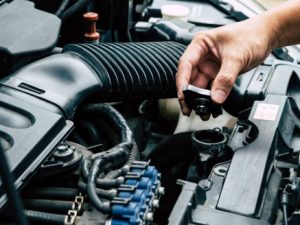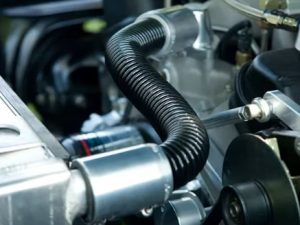Table of Contents
- The Role of the Radiator in Car Cooling Systems
- Key Components of a Car Radiator System
- Common Problems with Radiators and Cooling Systems
- Maintenance Tips for Your Radiator and Cooling System
- Common Radiator Components and Their Functions
Car radiators are essential components of a vehicle’s cooling system, ensuring the engine operates at an optimal temperature. Overheating can cause significant engine damage, so a well-functioning radiator is crucial for the health of your vehicle. This article explores the key parts of car radiators and how they work together to regulate engine temperature efficiently. Additionally, we’ll look at common radiator problems, how to maintain your cooling system, and what to consider when replacing parts.
1. The Role of the Radiator in Car Cooling Systems

The primary function of a car radiator is to prevent the engine from overheating. The engine generates a significant amount of heat during operation, and without an effective cooling system, this heat would build up, causing damage to vital components. Radiators play a central role in maintaining a balanced engine temperature by dissipating excess heat into the surrounding air.
The radiator works by circulating coolant, which absorbs heat from the engine and then passes through the radiator, where it cools down before being recirculated through the engine. Without the radiator, the engine could reach temperatures that would result in melting components or causing a complete engine failure.
2. Key Components of a Car Radiator System
The radiator is not a standalone component; it works in conjunction with several other parts to provide an efficient cooling system. Below is an overview of the main components involved:
2.1. Radiator Core
Description: The radiator core is the main body of the radiator. It consists of a series of thin metal tubes through which coolant flows. These tubes are surrounded by fins that help increase the surface area, allowing the coolant to release heat more efficiently.
- Function: The radiator core is responsible for cooling the heated coolant by transferring the heat to the surrounding air.
- Materials: Most modern radiators are made from aluminum, while older models may have brass or copper cores.
2.2. Coolant (Antifreeze)
Description: Coolant, or antifreeze, is a mixture of water and chemicals that helps to regulate engine temperature. It absorbs heat from the engine and then passes through the radiator to release it.
- Function: Coolant prevents the engine from overheating, maintains a consistent temperature, and also prevents the coolant from freezing in cold weather.
- Types: There are different types of coolant, including organic acid technology (OAT), hybrid organic acid technology (HOAT), and inorganic acid technology (IAT), each designed for specific vehicle types and climates.
2.3. Radiator Fan
Description: The radiator fan is located behind the radiator core and helps increase airflow when the vehicle is idling or moving slowly.
- Function: The fan aids in cooling the radiator and the coolant when the car is not moving fast enough to allow natural airflow to cool the engine.
- Types: Fans can be mechanical (driven by the engine) or electric (operating independently from the engine).
2.4. Radiator Cap
Description: The radiator cap seals the radiator and helps maintain the correct pressure within the cooling system.
- Function: The radiator cap controls the pressure in the system and allows coolant to flow to and from the reservoir tank. It also acts as a safety mechanism by releasing pressure if it becomes too high.
- Pressure Rating: The radiator cap typically has a pressure rating, usually ranging from 13 to 16 psi, depending on the vehicle manufacturer.
2.5. Thermostat
Description: The thermostat is a temperature-sensitive valve located between the engine and the radiator.
- Function: The thermostat controls the flow of coolant into the radiator based on the engine temperature. It keeps the coolant within the engine until it reaches the ideal operating temperature, at which point it opens to allow coolant to flow to the radiator.
- Symptoms of Failure: A stuck thermostat can cause overheating or erratic engine temperature regulation.
2.6. Coolant Reservoir Tank
Description: The coolant reservoir, or expansion tank, is a container that holds excess coolant.
- Function: This tank allows for the expansion and contraction of the coolant as it heats and cools. It ensures that the cooling system maintains a consistent amount of coolant at all times.
- Location: It is usually located near the radiator and is often transparent, allowing for easy monitoring of coolant levels.
2.7. Hoses
Description: Several hoses connect the radiator to the engine and other parts of the cooling system. These hoses are made of rubber or reinforced materials that can withstand high temperatures.
- Function: The hoses transport coolant to and from the radiator, circulating it through the engine to absorb heat and release it.
- Common Problems: Over time, hoses can become brittle or cracked, leading to coolant leaks or reduced flow.
2.8. Water Pump
Description: The water pump is responsible for circulating coolant throughout the engine and radiator.
- Function: The pump ensures that coolant moves through the engine block, radiator, and heater core, keeping the system circulating and maintaining a steady flow of coolant.
- Failure Symptoms: A failed water pump can lead to engine overheating, coolant leaks, or noise from the pump itself.
2.9. Heater Core
Description: The heater core is a small radiator-like component located inside the vehicle’s cabin.
- Function: It provides warmth for the cabin by transferring heat from the engine’s coolant into the interior. The heater core operates when the engine is running, using the heat from the engine to warm the cabin.
- Failure Symptoms: A leaking heater core can cause coolant loss and might also produce a sweet odor in the cabin or foggy windows.
| Component | Function | Common Issues |
|---|---|---|
| Radiator Core | Cools the engine coolant by transferring heat to air | Corrosion, clogs, leaks |
| Coolant | Absorbs and transfers heat from the engine | Low coolant levels, incorrect mixture |
| Radiator Fan | Increases airflow to cool the radiator and coolant | Failure to operate, blocked fan |
| Radiator Cap | Maintains pressure in the cooling system | Leaks, incorrect pressure |
| Thermostat | Regulates coolant flow based on engine temperature | Sticking closed (overheating), stuck open (low temperature) |
| Coolant Reservoir Tank | Holds extra coolant for expansion and contraction | Cracks, leaks, low coolant |
| Hoses | Transports coolant to and from the radiator | Cracking, leaks |
| Water Pump | Circulates coolant through the system | Leaks, worn-out bearings, noise |
| Heater Core | Heats the cabin using engine coolant | Leaks, blockages, loss of cabin heat |
3. Common Problems with Radiators and Cooling Systems

Radiators and their components are designed to last for many years, but they are still susceptible to wear and tear. Some common issues include:
3.1. Leaking Radiator
A leaking radiator can result from cracks in the radiator core or damage caused by road debris. If your radiator is leaking, it can cause your vehicle to overheat and potentially damage the engine.
- Signs of a Leaking Radiator: Low coolant levels, puddles of coolant under the car, engine overheating.
- Solution: Inspect the radiator for visible cracks or damage and replace it if necessary.
3.2. Clogged Radiator
Over time, debris, rust, and contaminants can accumulate in the radiator, reducing its ability to dissipate heat. A clogged radiator can cause the engine to overheat.
- Signs of a Clogged Radiator: Overheating engine, poor air circulation around the radiator.
- Solution: A professional can flush the radiator to remove any debris and contaminants. In severe cases, replacing the radiator may be necessary.
3.3. Failing Water Pump
The water pump is essential for circulating coolant through the engine and radiator. A failing water pump can lead to engine overheating, coolant leaks, or system failure.
- Signs of a Failing Water Pump: Coolant leaks, whining or grinding noises, engine overheating.
- Solution: Replace the water pump promptly to avoid further engine damage.
3.4. Sticking Thermostat
A thermostat that is stuck closed will prevent coolant from flowing into the radiator, causing the engine to overheat. Conversely, a thermostat that is stuck open may result in the engine running too cool.
- Signs of a Sticking Thermostat: Erratic temperature gauge, engine overheating or running too cool.
- Solution: Replace the thermostat to restore proper temperature regulation.
4. Maintenance Tips for Your Radiator and Cooling System
Proper maintenance is key to ensuring the longevity of your radiator and cooling system. Here are some tips to keep everything running smoothly:
- Check Coolant Levels Regularly: Ensure that the coolant levels are adequate and top them up if necessary. Low coolant can cause the engine to overheat.
- Inspect Radiator Hoses: Look for any signs of cracks, wear, or leaks in the radiator hoses. Replace them if needed to prevent leaks or overheating.
- Flush the Cooling System: Flushing the radiator periodically helps remove rust, debris, and contaminants from the cooling system.
- Replace the Thermostat: If your thermostat is not functioning properly, replace it to ensure consistent engine temperature.
- Clean the Radiator: Remove any debris or dirt from the radiator fins to ensure proper airflow. Clean the radiator regularly, especially after off-road driving or during the winter months.
- Check the Radiator Cap: A faulty radiator cap can cause leaks and loss of pressure in the system. Make sure the cap is in good condition.
Common Radiator Components and Their Functions
| Component | Function | Common Issues |
|---|---|---|
| Radiator Core | Cools the engine coolant by transferring heat to air | Corrosion, clogs, leaks |
| Coolant | Absorbs and transfers heat from the engine | Low coolant levels, incorrect mixture |
| Radiator Fan | Increases airflow to cool the radiator and coolant | Failure to operate, blocked fan |
| Radiator Cap | Maintains pressure in the cooling system | Leaks, incorrect pressure |
| Thermostat | Regulates coolant flow based on engine temperature | Sticking closed (overheating), stuck open (low temperature) |
| Coolant Reservoir Tank | Holds extra coolant for expansion and contraction | Cracks, leaks, low coolant |
| Hoses | Transports coolant to and from the radiator | Cracking, leaks |
| Water Pump | Circulates coolant through the system | Leaks, worn-out bearings, noise |
| Heater Core | Heats the cabin using engine coolant | Leaks, blockages, loss of cabin heat |
Conclusion
Understanding the components of your car’s radiator and cooling system is essential for maintaining engine performance and preventing overheating. Regular maintenance, including checking coolant levels, inspecting hoses, and replacing faulty components, can help extend the life of your radiator and ensure that your vehicle runs smoothly.
If you’re looking to replace or upgrade your radiator components, Buy car radiator components online for a wide selection of high-quality parts designed to keep your cooling system in optimal condition.